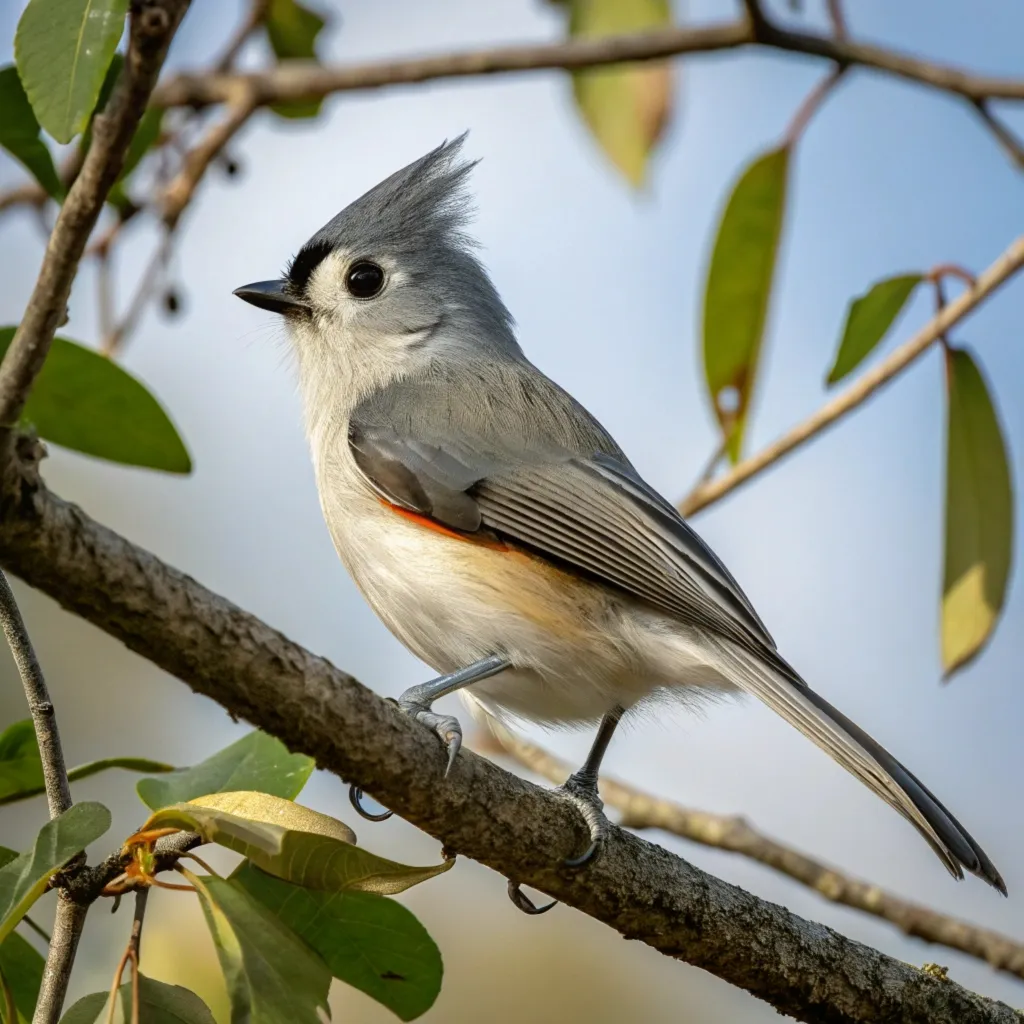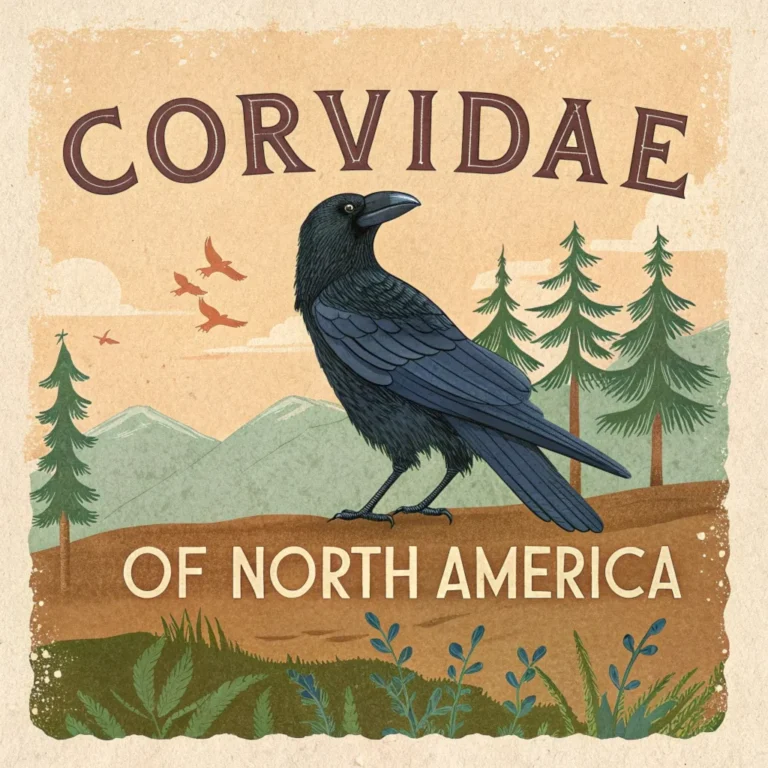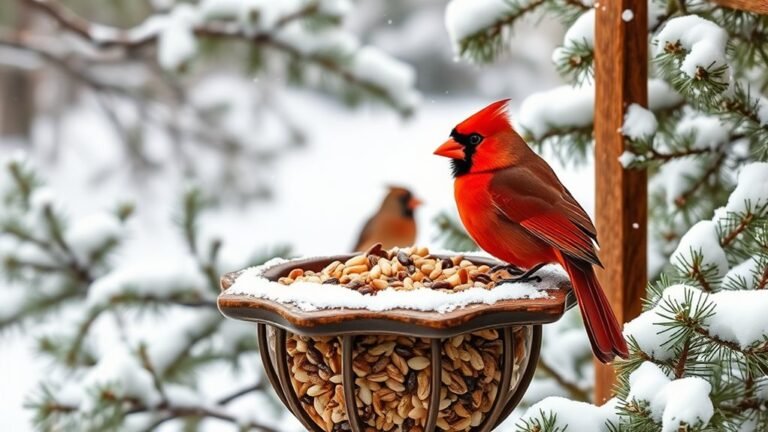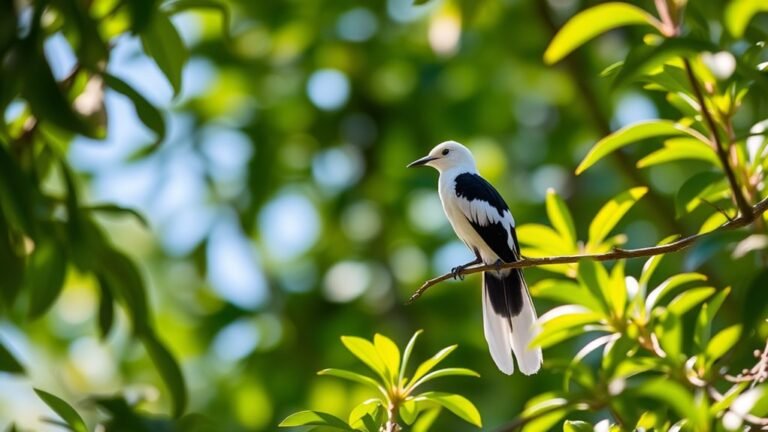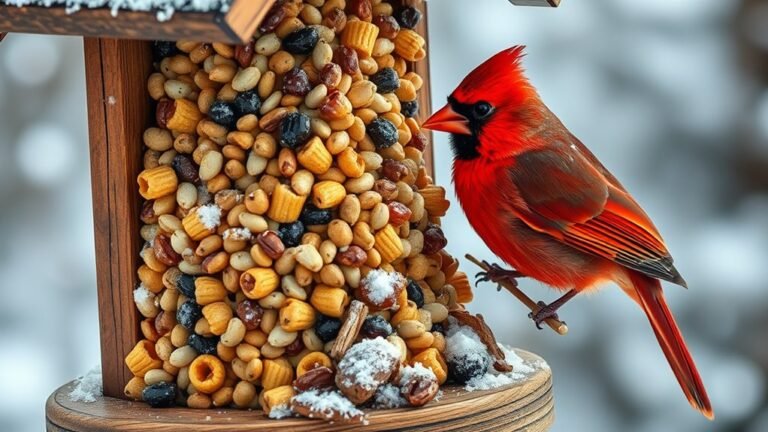Nesting Behaviors of the Tufted Titmouse in USA Revealed
Have you ever seen a small, gray bird with a pointy crest on its head? That’s a Tufted Titmouse! These cute birds live in many parts of the United States. They build their nests in tree holes and even in birdhouses.
In this guide, we’ll learn all about how Tufted Titmice make their homes and raise their babies. We’ll explore where they like to build nests, what materials they use, and how they take care of their eggs and chicks.
Whether you’re a bird watcher or just curious about nature, you’ll find lots of interesting facts about these friendly backyard birds. Let’s dive in and discover the amazing world of Tufted Titmouse nesting!
Key Takeaways
- Nesting Period: Tufted Titmice typically nest from early April to mid-July.
- Nest Location: They prefer tree cavities, often using abandoned woodpecker holes or natural openings.
- Nest Construction: Both male and female participate in building the nest, which takes 4 to 11 days.
- Nest Materials: Nests consist of coarse materials like twigs and leaves, lined with soft items such as fur and feathers.
- Egg Laying: Females lay 5 to 8 creamy-white eggs with reddish-purple spots.
- Incubation: The female incubates the eggs for 13-17 days.
- Chick Care: Both parents feed the young, which leave the nest after 17-18 days.
- Breeding Range: Tufted Titmice inhabit deciduous and mixed forests in the eastern half of the USA.
- Habitat Adaptation: They readily adapt to suburban areas and use nest boxes.
- Unique Behavior: Titmice are known to pluck hair from live animals, including humans, for nest lining.
Geographical Distribution

Tufted Titmice inhabit the Eastern United States, ranging from Texas to Maine. These birds prefer forests below 2,000 feet elevation, including both evergreen and deciduous types.
Unlike migratory species, Tufted Titmice remain in their breeding areas year-round. Climate change has led to a gradual northward expansion of their range.
The Tufted Titmouse is a bird that likes to stay in one place. It lives in many parts of the Eastern United States. You can find these birds in places with lots of trees, like forests and parks.
They don’t fly south for the winter like some birds do. Instead, they stay in the same area all year long. As the weather gets warmer over time, these birds are starting to move a bit further north.
This means people in more northern states might start seeing more Tufted Titmice in their backyards.
Nesting Site Selection

Tufted Titmice display specific preferences when choosing nesting sites:
- Cavity Types: They use natural tree cavities, abandoned woodpecker holes, and artificial nest boxes.
- Height: Nests can be found from 3 to 90 feet above ground, with an average height of 35-40 feet.
- Location: They prefer wooded areas but adapt well to suburban environments.
- Proximity: Nests may be placed near food sources like bird feeders.
Tufted Titmice are picky about where they build their nests. They look for holes in trees to make their homes. Sometimes, they use old holes that woodpeckers made.
These birds also like to use birdhouses that people put up. They build their nests high up in trees, usually about as high as a three-story building.
Tufted Titmice like to live in areas with lots of trees, but they’re also happy in neighborhoods where people live.
They often build their nests close to places where they can find food, like bird feeders in people’s yards.
Nest Construction

The nest-building process of Tufted Titmice involves both partners:
- Duration: Nest construction takes 4 to 11 days.
- Materials: They use moss, bark strips, leaves, and grass for the base.
- Lining: Soft materials like animal hair, fur, and feathers line the nest cup.
- Unique Behavior: Titmice boldly pluck hair from live animals, including humans, for nest lining.
Building a nest is a team effort for Tufted Titmice. Both the mom and dad bird work together to make their home. It takes them about a week to finish their nest.
They use all sorts of things to build it. For the main part, they gather moss, little pieces of tree bark, leaves, and grass. Then, they make the inside of the nest soft and cozy.
They use animal fur, feathers, and even hair to line the nest. Sometimes, these brave little birds will even pluck hair from living animals or people to use in their nests! This helps keep their babies warm and comfortable.
Egg Laying and Incubation

The breeding cycle of Tufted Titmice follows a specific pattern:
- Egg Description: Eggs are creamy-white with reddish-purple spots, more concentrated on the wider end.
- Clutch Size: Females lay 5 to 8 eggs per brood.
- Incubation Period: The female incubates the eggs for 13-17 days.
- Male’s Role: Males often feed the female during incubation.
After the nest is ready, the female Tufted Titmouse lays her eggs. She usually lays between 5 and 8 eggs. These eggs are a creamy-white color with small reddish-purple spots.
The spots are mostly on the bigger end of the egg. The mom bird sits on the eggs to keep them warm. This is called incubation. She stays on the eggs for about two weeks.
During this time, the dad bird brings food to the mom. This way, she doesn’t have to leave the eggs to find food. The dad’s help is very important to make sure the eggs stay warm and safe.
Chick Rearing

Tufted Titmouse parents work together to raise their young:
- Hatching: Eggs hatch after the incubation period.
- Feeding: Both parents feed the nestlings.
- Fledging: Young birds leave the nest 17-18 days after hatching.
- Extended Care: Parents continue feeding fledglings for some time after they leave the nest.
When the baby Tufted Titmice hatch from their eggs, both parents take care of them. The mom and dad work as a team to feed their babies. They bring small insects and seeds to the nest.
The baby birds grow quickly. After about two and a half weeks, they are ready to leave the nest. This is called fledging. Even after the young birds leave the nest, their parents keep feeding them for a while.
This helps the young birds learn how to find food on their own. The parents are very busy during this time, flying back and forth to feed their hungry babies.
Breeding Season Behavior

During the breeding season, Tufted Titmice exhibit specific behaviors:
- Pair Formation: Pairs may form during winter or at the start of breeding season.
- Territoriality: As spring approaches, birds become more aggressive and intolerant of flock members.
- Courtship: Males feed females as part of the courtship ritual.
- Breeding Period: The main breeding season runs from April to early July.
In the spring, Tufted Titmice start to act differently. This is because it’s time for them to have babies. They find a partner to be their mate. Sometimes they do this in winter, or they might wait until spring.
As the weather gets warmer, the birds become more protective of their area. They don’t want other Tufted Titmice to come too close. The male birds show they like a female by bringing her food.
This is how they ask to be her mate. Most Tufted Titmice have their babies between April and July. During this time, you might see them flying around more, looking for food and nesting materials.
Multiple Broods

Tufted Titmice often raise multiple broods in a single season:
- Number of Broods: They may have one or two broods per year.
- Helper System: Young from the first brood sometimes assist in raising the second brood.
- Nest Reuse: If undisturbed, titmice may reuse nest cavities for second broods.
Tufted Titmice are busy parents. They often have two sets of babies in one year. This means they raise one group of chicks, and then they start over with new eggs.
Sometimes, the older babies from the first group help take care of their younger brothers and sisters. This is very special behavior. If nothing bothers their nest, the birds might use the same hole in the tree for their second group of babies.
This saves them time because they don’t have to build a whole new nest. Having two groups of babies in one year helps more Tufted Titmice survive and grow up.
Nesting in Artificial Structures

Tufted Titmice adapt well to human-provided nesting options:
- Nest Boxes: They readily accept and use artificial nest boxes.
- Other Structures: Some titmice nest in unusual places like metal pipes or fence posts.
- Placement: Nest boxes can be placed 30-40 feet apart, even in small areas.
Tufted Titmice are smart birds that can adapt to living near people. They like to use birdhouses that humans put up for them. These birdhouses are like little homes for the birds.
Sometimes, Tufted Titmice find other funny places to build nests. They might use a metal pipe or even a hole in a fence post. People who want to help these birds can put up birdhouses in their yards.
It’s good to put the birdhouses about 30 to 40 feet apart. This gives each bird family enough space. Even if you have a small yard, you can still help these birds by putting up a birdhouse.
Conservation and Human Interaction

Understanding Tufted Titmouse nesting behaviors helps in conservation efforts:
- Habitat Preservation: Maintaining wooded areas supports titmouse populations.
- Nest Box Programs: Providing nest boxes can help titmice in areas with limited natural cavities.
- Feeding: Titmice frequently visit bird feeders, supporting their nesting success.
People can help Tufted Titmice in many ways. One big way is by keeping trees and forests safe. These birds need trees to live in and find food. Another way to help is by putting up birdhouses.
This is really important in places where there aren’t many natural holes in trees. Tufted Titmice also like to visit bird feeders. When people put out bird food, it helps these birds find enough to eat.
This is especially helpful when the birds are taking care of their babies. By doing these things, people can make sure there are lots of Tufted Titmice for years to come.
FAQs
How long do Tufted Titmice pairs stay together?
Tufted Titmice often form pair bonds that last for several breeding seasons, but they are not considered to mate for life. Some pairs may separate after nesting to find new territories.
Can Tufted Titmice excavate their own nest cavities?
No, Tufted Titmice cannot excavate their own cavities. They rely on existing natural cavities, abandoned woodpecker holes, or artificial nest boxes for nesting.
How many eggs do Tufted Titmice typically lay?
Tufted Titmice usually lay 5 to 8 eggs per clutch. The eggs are creamy-white with reddish-purple spots.
Do Tufted Titmice use the same nest for multiple years?
While Tufted Titmice may reuse a nest cavity for a second brood in the same season, they typically build a new nest each year, even if using the same cavity.
How can I attract Tufted Titmice to nest in my yard?
To attract Tufted Titmice, provide suitable nest boxes, maintain wooded areas or mature trees, and offer bird feeders with seeds and suet. Ensure the nest boxes have appropriate entrance hole sizes and are placed at suitable heights.

Kashvi is a passionate bird enthusiast and nature lover who has been fascinated by the world of birds for years. With a keen eye for detail and a love for learning, Kashvi is dedicated to sharing her knowledge and insights with fellow bird enthusiasts on Avian Enthusiasts. Through her engaging and informative articles, Kashvi aims to inspire others to join her in exploring the fascinating world of birds and to promote a deeper appreciation for these incredible creatures.

